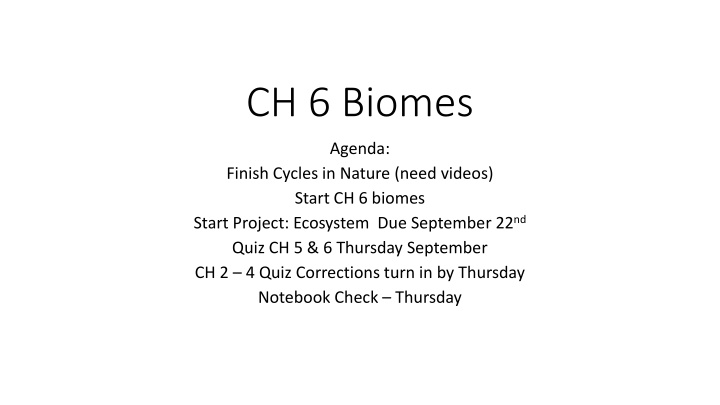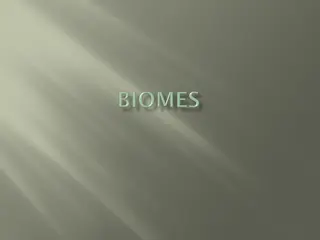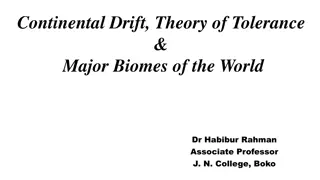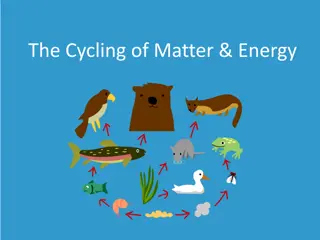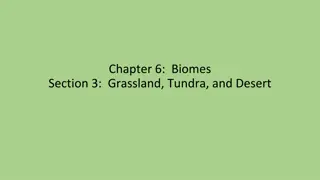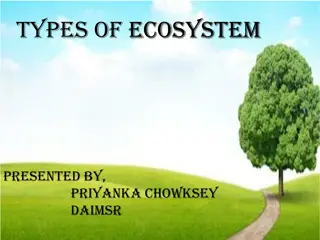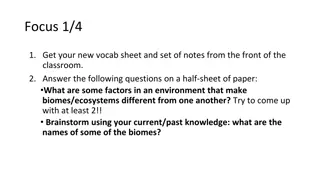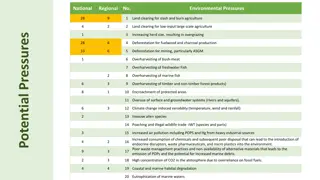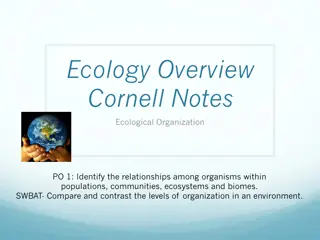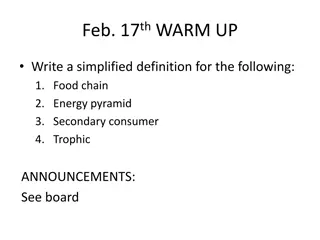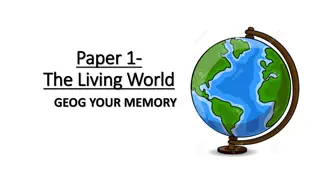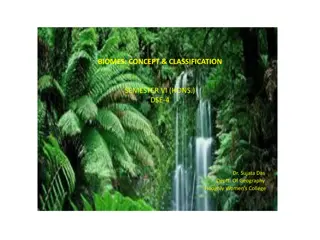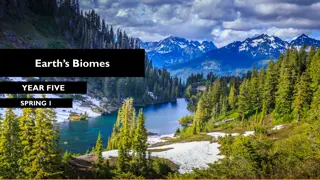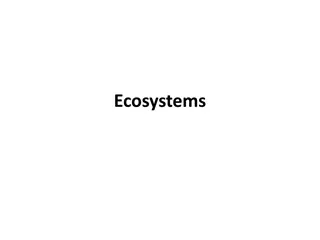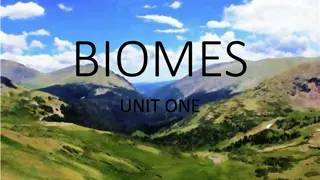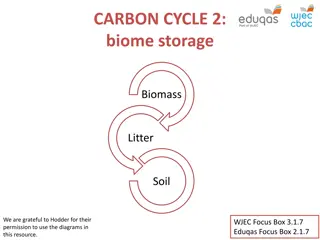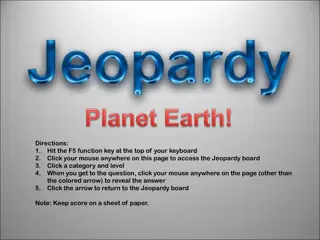Biomes and Ecosystems
Dive into the fascinating world of biomes and ecosystems with a focus on cycles in nature, climate relationships, forest characteristics, and more. Discover the layers of rainforests, adaptations of plants and animals, and the impacts of deforestation. Engage in hands-on activities like reading climatograms and identifying biomes based on location. Get ready for a quiz, project deadlines, and exploring the intricate balance of biotic and abiotic factors in different environments.
Download Presentation

Please find below an Image/Link to download the presentation.
The content on the website is provided AS IS for your information and personal use only. It may not be sold, licensed, or shared on other websites without obtaining consent from the author.If you encounter any issues during the download, it is possible that the publisher has removed the file from their server.
You are allowed to download the files provided on this website for personal or commercial use, subject to the condition that they are used lawfully. All files are the property of their respective owners.
The content on the website is provided AS IS for your information and personal use only. It may not be sold, licensed, or shared on other websites without obtaining consent from the author.
E N D
Presentation Transcript
CH 6 Biomes Agenda: Finish Cycles in Nature (need videos) Start CH 6 biomes Start Project: Ecosystem Due September 22nd Quiz CH 5 & 6 Thursday September CH 2 4 Quiz Corrections turn in by Thursday Notebook Check Thursday
9/14 Biomes CH 6.1 Obj. TSW compare and contrast biotic and abiotic factors of different biomes in an ecosystem project. P. 38 NB 1. What is a Biome? 2. Explain how a Tropical Rain Forest is different from a Tiaga 3. How might any of the cycles you have learned impact a Biome?
Levels of Questions You write your next quiz CH 5 & 6 Level 1- What is, List, Recall, Name (What is salinization?) Easy to find in the book, usually a definition in bold, one word/ sentence answer. Only 1 point Level 2- Explain, Compare & Contrast (Explain the Nitrogen Cycle) Still in the book, yet you have to read and gather information maybe in different places to answer the question. Answer in a sentence or two. 2 points Level 3 How and/or why of a big concept, or argument or idea (How does the Nitrification contribute to Acid Rain?) May not be in your book, may need to research several chapters, internet, or community for answers, maybe debatable. Answer in several sentences or a paragraph. 3 points Everyone must turn in 5 points of questions by Wednesday HW (5 points)
Carbon Cycle Notes Page 39 NB Nitrogen Cycle
9/15 Biomes & Climate & Forests CH 6.1 & 6.2 Obj. TSW learn how to read a climatogram to determine an areas temperature and precipitation. P. 40 NB 1. What is the climate relationship between Temperature and Precipitation? 2. How do biomes and vegetation change with Latitude and Altitude? 3. Explain how to read a climatogram.
9/16 Forests CH 6.2 & 6.3 Obj. TSW learn characteristics, adaptations and conservation methods of the forest. P. 42NB 1. What are the layers of a Rainforest? 2. What are some adaptations plants and animals make to live in the Forest. 3. Read the Case Study: Deforestation Climate, and Floods. Write an AXES paragraph about deforestation and it s impacts for the planet.
Activity: Latitude & Longitude Locate the following Cities on a Map: Singapore, Buenos Aires, Juno, Alaska Identify the Biome by: Identify the precipitation and temperature Identify the altitude and the latitude What type of animals and abiotic factors might you find?
Ecosystem Poster Project Due Friday September 25th
9/17 Grassland, Desert, and Tundra Biomes Obj. TSW describe adaptations and threats to biomes. P. 44 NB 1. Describe the climate of a chaparral biome. 2. Describe adaptations of desert organisms. 3. Discuss one threat to tundra biome.
